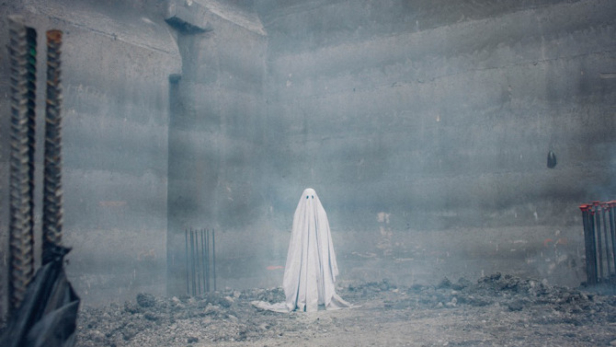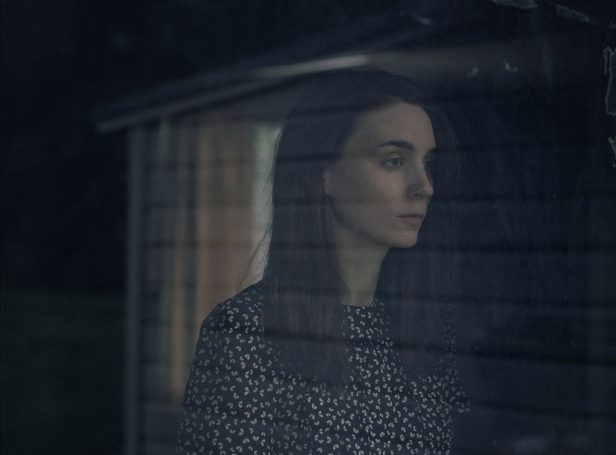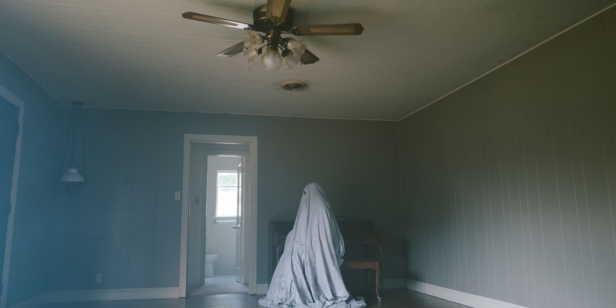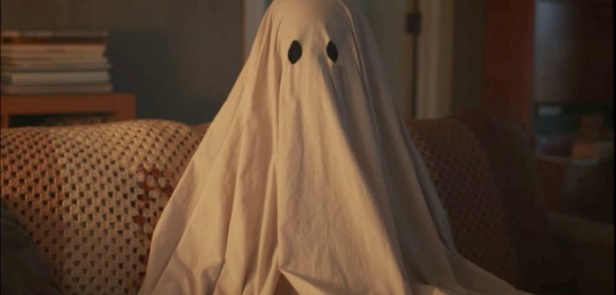David Lowery’s A Ghost Story is quite unlike most spectre-based tales you’ll have seen onscreen. For one thing, while there’s definitely haunting going on, it’s no horror film. Told in a series of slow-going sustained takes, it starts off as a tender romance before taking on paranormal qualities, eventually veering into sci-fi territory best left unspoiled.
Casey Affleck plays a white-sheeted ghost (no, really), who declines entry to an apparent afterlife and returns to his Texas home to see his bereft wife (Rooney Mara), whom he cannot communicate with. As his love moves on, this spectral figure finds himself unstuck in time, trapped on the land of his former home, forced to witness years of changes in inhabitants and surroundings…
ALL ABOUT TIME
The sense of time passing is the film’s most hypnotic quality. “That’s what I wanted to explore with it,” says Lowery when we sit down with him at Sundance London, “even though I didn’t know that at the time when I was writing and shooting it. But that’s ultimately what the film is all about.”
“I knew that the movie would have very few shots in it,” he continues. “There wasn’t gonna be a lot of material. Every shot needed to carry more weight than it would in a normal film, and I wanted to convey a lot with very little. And so, I knew I needed to suggest that time was moving by, and I needed to do that efficiently and effectively. I also wanted to make sure it was clear to the audience that the ghost was staying in one place as she [Mara] moved on.”
BELIEF IN SPIRITS
“Part of it is just I want to believe in something that I can’t explain,” says Lowery of his own belief in ghosts. “And I can’t quite bring myself to have faith in the idea of an afterlife or of a God, but I do believe there are many tenets of this universe that we have not even scratched the surface of yet. And within that belief, I give myself permission to believe in ghosts.”
That belief allows the film to explore a lot of different feelings, and to slip between genres. “I can’t quite explain it, but I like believing that ghosts exist, and I don’t know what they might be, but part of it is just that almost childish wish to be scared – I like the idea of going to a haunted house and actually having a paranormal experience,” he tells us. “But I don’t have a good explanation for it. I could talk about subscribing to the idea that a physical space can retain psychic energy, but I ultimately don’t know what that means and I don’t have any backup for that idea. I find my existence on a day to day basis better if there’s a couple of inexplicable mysteries to the universe that I don’t have answers for.”
KUBRICKIAN
Where Lowery’s film goes in its third act reminds us of Stanley Kubrick’s sci-fi benchmark 2001: A Space Odyssey, and we describe A Ghost Story to the filmmaker as like a domesticated riff on 2001. “I love that you say that,” he effuses.” And your phrasing is fantastic; ‘domesticated riff on 2001’ is something I’m just gonna keep repeating – I’ll give you credit for it. But that totally applies. It wasn’t on my mind while doing it, but it is 100% a valid reading of the movie because it is dealing with a lot of those same ideas, particularly the last act of 2001.”
GHOSTLY FORMS
At various points, Affleck’s simple sheet costume seems to transform shape, making him look and seem wounded. “It’s interesting you bring that up,” Lowery says, “because I haven’t talked about this at all, but there are actually three different stages for the ghost. He starts off with a clean white linen bed sheet, and, over the course of the film, gradually that sheet gets dirtier and more worn down and more threadbare. And so there is this sense that he is changing over time.”
“At the beginning of the film he’s always just standing upright, and over the course of the movie he starts to crumple a little bit. And so he does transform. But also, the shape was so simple and it was so malleable in a way that you just have this very simple shape with two eyes, and it kind of transformed based on the context it was in.”
It’s a striking visual, but what really surprises is the extent to which we can still connect with him emotionally as the story progresses. “In spite of the fact we were deliberately transforming it over the course of the film, and depending on what scene we’d shoot we’d have a different costume, it definitely also adapted to its surroundings in a very specific way,” Lowery explains. “Part of it is [Affleck’s] performance; part of it is the mechanics of the costume; part of it is the specific costume he was wearing based on the period of the movie; and then a lot of it is just absorbing the world around him. That character becomes sort of a sponge and just takes on the attributes of wherever he is.”
UNDER THE SKIN
There are moments in A Ghost Story, with its sparse dialogue, lingering shots and beautiful visuals, which are reminiscent of Jonathan Glazer’s stunning Under The Skin, and it’s a comparison which Lowery appreciates: “I love Under The Skin, and I certainly thought about it while making this movie. Not any sort of direct reference, but the simplicity of Under The Skin is a beautiful, beautiful thing that I take a great deal of inspiration from.”
“Pete’s Dragon has a ton of Under The Skin references in it. Not because I wanted to put any darkness into Pete’s Dragon, but there are just certain technical things that I kept referencing. Whenever the dragon disappears in the movie, the sound of him disappearing is the same sound as those bodies in that space [where Scarlett Johansson’s alien lures her victims], which is the sound of crinkling leaves. That was a very subtle reference to a great film. That’s a side note, but feel free to let the world know that there are all sorts of references to Under The Skin in Pete’s Dragon.”
A Ghost Story is released in cinemas on 11 August.



